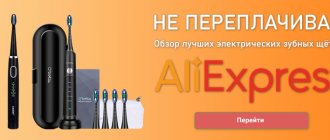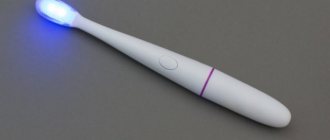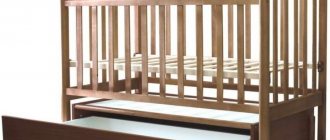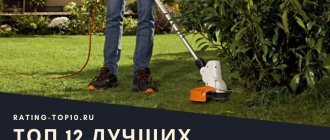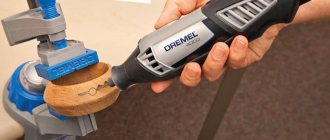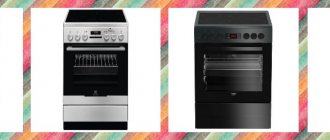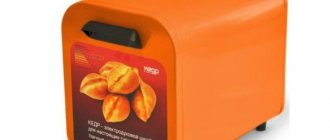At what age can a child brush his teeth with an electric brush?
Although today manufacturers produce electric brushes with soft bristles even for one-year-old babies, most dentists agree that the optimal age for a child to start using an electric toothbrush is three years.
In this article
- At what age can a child brush his teeth with an electric brush?
- The benefits of using an electric toothbrush for children
- How to choose a brush for three-year-olds?
- Selecting an electric brush for a child 6-12 years old
- Choosing a toothbrush for a teenager
- Teach your child to brush their teeth properly
At an earlier age, it is better to brush your teeth with a regular manual brush, since an electric one affects the teeth more intensely and can harm children’s fragile enamel and delicate gums. In some cases, dentists recommend using an electric brush no earlier than the child reaches 5 full years of age. This recommendation may be related to the individual characteristics of teeth and gums. The safest option is to discuss this issue with a professional dentist before purchasing an electric toothbrush for your child.
Choosing an electric toothbrush for a child
Children tend to buy the best, especially when it comes to health. Every parent wonders which model to choose. Before ordering an electric toothbrush for your child, Startsmile recommends consulting with your dentist. He will assess the condition of your baby's teeth and gums and give his recommendations. There are few contraindications for use, but you should not forget about them:
- There are white spots on the child’s teeth - this may be the beginning of caries. It is better to buy an electric brush after treatment - it affects the teeth more intensely;
- sore gums.
The benefits of using an electric toothbrush for children
An electric toothbrush has several benefits for cleaning children's teeth.
- Effectively removes plaque.
Electric brushes have an intensive effect on dirt, remove even complex plaque, and cope better than usual with the grooves of children’s teeth, interdental spaces and other hard-to-reach areas. Thanks to high-quality removal of dental plaque, the risk of developing caries is reduced several times.
- Easy to use.
Essentially, the electric brush itself does the job of cleaning your teeth due to the movement of the cleaning head and a timer that tracks the duration of the procedure. Children aged three years old are helped by their parents to brush their teeth; a child aged 8 years and older can easily cope with this task independently.
- Enjoy brushing your teeth.
It's no secret that many children (whether they are 5, 7 or 9 years old) brush their teeth with a regular brush without much enthusiasm. If they can avoid the procedure, they will gladly take advantage of this opportunity or try to complete the cleaning as quickly as possible. It has been observed that an electric toothbrush, at least 5 and 8 years old, motivates children to thoroughly brush their teeth every day. Children enjoy using it twice a day, while maintaining the required cleaning time. Most likely, this is due to the fact that a modern child at 5, 8 and 11 years old is attracted to technological gadgets. An electric toothbrush is just such a device. In addition, manufacturers produce children's models of brushes in bright designs.
The body is usually decorated with images of your favorite cartoon characters, and you can turn on the backlight - all this adds an element of play to a boring oral care routine and helps reinforce a healthy habit. Thus, an electric children's toothbrush is an excellent solution for children of different ages. Dentists note that children who regularly use such brushes are less likely to have caries, dark plaque does not form along the edges of the gums, and such children are not afraid of dentists.
How to choose an electric brush for a child
There are not many manufacturers producing such useful devices. The choice has to be made between brushes from the brands Braun ORAL-B, Phillips, Hapica, Kolibree. These manufacturers are the best in the development of electric toothbrushes.
Therefore, the purchase should be made based on the functionality of the brush, which is suitable specifically for a child. What to pay attention to.
- Brush type
Electric brushes come in standard, sonic and ultrasonic types.
Standard type brushes are characterized by the presence of a round head, which makes rotational movements in different directions. The rotation speed can vary from 2 to 30 thousand movements per minute. Such devices provide gentle cleaning and are suitable for children. They beat ultrasonic and sonic brushes in price, but are inferior to them in cleaning quality.
Sonic brushes can even be identified by sensation; their vibration will be clearly audible to the human ear. The cleaning principle here is based on oscillatory movements resulting from sound waves generated by a special membrane and transmitted to the villi. The amplitude of vibrations is important here; with its help, you can achieve a homogeneous mixture of paste, air and water, which will allow you to carefully overcome plaque even in inconvenient places. Such brushes thoroughly massage the gums, carefully and efficiently clean the teeth, and do not harm veneers, braces and fillings. However, in order not to damage the enamel, you need to practice your cleaning technique.
Ultrasonic brushes are a special type, although the principle of operation seems similar to sonic devices, but has an important difference - the pulsation frequency is so high that plaque and complex contaminants are literally destroyed, and not simply swept out of the interdental space. The main advantages of an ultrasonic brush are excellent results with a minimum of effort and economical consumption of toothpaste, and the ability to combat pigmentation. As for the disadvantages, this is the presence of contraindications in the form of various artificial structures in the mouth, certain diseases of the oral cavity.
- Cleaning mode
The next thing that is important to pay attention to is the presence of certain special cleaning modes. In particular, the habituation function and the delicate cleaning mode are useful for children.
- Brush head shape and size
For children, a round head is considered the best, but oval-shaped models are also available and have their advantages. In any case, the size of the head of a children's brush should not exceed 22 mm.
- The stiffness of the bristles and the material used to make them
Electric brushes use medium-hard and soft bristles; the latter are suitable for children's devices. Most head variations have bristles made of synthetic materials, but there are also brushes with natural bristles, suitable, for example, for allergy sufferers.
Separately, it is worth noting models with bristles made of silicone, which are gentle on children’s teeth.
- Pen
A children's brush should have a handle of a suitable diameter that will be comfortable for the child to hold in his hand. It is important to have rubberized inserts that do not allow the device to slip out of wet palms.
- Nozzles
Most brushes have removable heads, as brush heads need to be replaced periodically. The service life of the attachments can vary from 1 to 3 months. By the way, this must be taken into account when planning the cost of an electric brush.
There are also models that do not require any replacement; these are brushes with silicone bristles.
- Additional functionality
This concerns the presence of such useful functions as a pressure sensor that allows you to control the degree of pressure, a timer that tracks the duration of cleaning, backlight, and an indicator for replacing nozzles.
- Power type
The brush can be battery-powered or battery-powered. The first ones are cheaper, but will require the cost of replacing batteries. The latter come with a special charger, often in the form of a base, which is convenient to use, but requires an electrical outlet.
How to choose a brush for three-year-olds?
- Look at the labeling: usually manufacturers indicate what age the model is designed for.
- Let your child choose a brush with a princess, a robot or the hero he likes.
- Consider your child's choice, but remember that brightness and design are not the main indicators of a good brush. Be sure to look at functionality and safety.
- The bristles should be ultra-soft and short so as not to injure the delicate teeth of babies.
- An electric toothbrush for a child 5 years and younger should fit comfortably in a small child's hand, so pay attention to the thickness and anti-slip properties of the handle, as well as the overall weight of the device. The lighter, the more convenient it is for the child to use it.
- Children love it when cleaning turns into an interesting adventure. Models with LED backlighting always cause great delight.
For children under 5 years old, models such as CS Medica SonicPulsar CS-462, Oral-B Vitality Kids, Philips Sonicare For Kids are suitable.
How to choose a children's electric brush
The age at which children can brush their teeth with an electric brush is 3 years. Before you buy it, you need to study the characteristics. The bristles should be soft and rounded so as not to injure the gums and enamel of baby teeth. The movable head should be small in size - this will ensure comfortable and gentle cleaning. To make it comfortable for your child to hold an electric brush, it is better to choose models with a rubberized handle.
There are many proven manufacturers of children's electric brushes that have proven themselves: Oral-B, Sana, Colgate, Ecokupi and others. When choosing a little-known or unfamiliar brand, it is worth looking at recent reviews and reviews of products - even for 2021, the data may not be relevant.
Selecting an electric brush for a child 6-12 years old
At this age, children still pay attention to bright designs and choose brushes with cartoon characters. To get kids interested in brushing their teeth and make this process as fun as possible, some manufacturers produce special mobile applications. For example, the Sonicare For Kids brush from Philips connects to a smartphone via Bluetooth, and an educational application with a funny character teaches you how to brush your teeth correctly. If the child has completed all the tasks of the virtual mentor perfectly, he receives a reward.
- What other requirements should a brush for primary and secondary schoolchildren meet:
- Soft bristles that take age into account.
- The pulsation frequency of the bristles is from 16,000 movements per minute.
- The presence of a built-in timer that will tell the child when to move to another area of the jaw or complete cleaning.
- Possibility of replacing nozzles.
An example of good electric brushes for children 6-12 years old are the CS Medica CS-562 Junior, Oral-B Junior models.
There are three types of children's electric toothbrush:
- mechanical:
makes up to 12,000 rotational and reciprocating movements per minute; - sonic:
sound waves make the bristles move even faster - up to 30,000 movements per minute; - ultrasonic:
approved for use from 3 years of age, should be used periodically. Contraindicated for weak enamel.
How to choose a brush? Pay attention to the most important indicators first
- Age category.
- The hardness of the bristles is from extra soft to medium.
- Type of electrical model - mechanical, sound, ultrasonic.
- Manufacturers (the most popular are Oral B, Braun, CS Medica).
Korobtsova Vera Nikolaevna
hygienist at the Zubrenok pediatric dentistry clinic
For children of different ages, brushes are produced with different bristle stiffness and different speeds of rotation of the working head. All brushes recommended for children aged 3 to 7 years have soft bristles (Marked Soft) and a rotation speed of 40,00-10,000 rpm. The older the child, the faster the rotation speed of the brush head can be. Brushes for children over 7 years old have medium-hard bristles (labeled Medium). The head of a brush for children is always small; children should not use adult brushes - there is a high risk of damaging the gums. The children's brush has a special handle design to fit securely in the baby's hand; the handle should be comfortable. When choosing your favorite brush, you can pay attention to its additional features: the presence of a timer that helps control the time of brushing your teeth; a pressure sensor that warns when the pressure on the brush is too strong
Choosing a toothbrush for a teenager
At the age of 13-17 years, children can already use adult toothbrushes, unless otherwise recommended by the dentist. But some manufacturers produce special models for teenagers. A striking example is Oral-B TEEN:
- It is compatible with a large number of interchangeable attachments. You can also choose an attachment for sensitive teeth and gums.
- Removes more plaque than a regular brush and has a whitening effect.
- A pressure sensor is provided to protect the gums. It automatically reduces the speed and prevents you from pressing too hard on the brush.
- The two-minute timer ensures the correct, two-minute brushing time.
- A special mobile application allows you to track cleaning performance in real time. This helps to interest teenagers and motivate them to take regular and proper dental care.
- The brush holds a charge for up to two weeks.
Instructions for using an electric brush
To avoid harming your teeth, you need to know how to use an electric brush correctly. Parents must learn to do this themselves and teach their child.
A child should brush his teeth under adult supervision, even if he knows how to do it himself.
Recommendations for using the brush:
- The electric brush cleans your teeth by itself. During the procedure, you do not need to help her by making movements characteristic of using a regular brush.
- Don't put too much pressure on the head
- First you need to treat the outer surface of one row of teeth, then the inner one. After this you can move to another row
- The head should be positioned so that the bristles completely cover the tooth.
Teach your child to brush their teeth properly
It’s not enough to buy your child an electric toothbrush; you need to teach them how to use it correctly.
- Read the instructions carefully.
- Use a small pea-sized amount of fluoride paste.
- During brushing, the brush is positioned at a 45-degree angle to the gum line.
- Clean your teeth, moving from right to left, first along the upper ones, then along the lower ones. Brush first the outer, then the inner, and then the chewing surface of your teeth.
- The brush should be moved along the teeth slowly, without pressing too hard and without missing any areas.
Teach your child to brush his teeth correctly, and he will visit the dentist only for preventive purposes.
